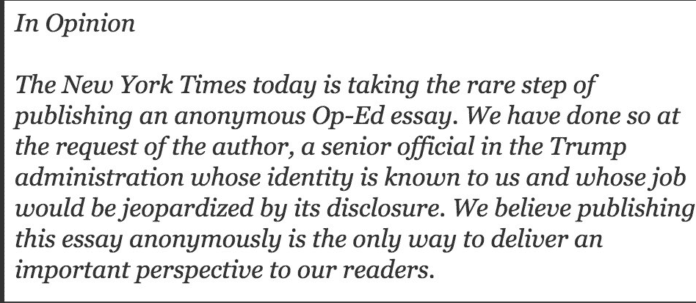Our Publisher Marlon Hanson provides some insight on how newsrooms and publishers once handled anonymous sources
It has been many years since I was with a major newspaper (the New York Daily News 1970-1981 and the Dallas Times Herald 1981-1987), but given today’s remarkable Op Ed in the New York Times, I thought I’d share my experiences with how breaking news and leaks affected the newsroom.
The first thing that would normally occur (after the reporter uncovering the major breaking news) would crash into the Editor’s office and very nervously ramble – often a bit incoherently – the nucleus of the news. Next, the drapes would be drawn and the door closed. The editor would calm the reporter, and request a repeat of the news to process and examine the details.
If that news was of enough significance, the editor would call the publisher of the newspaper and repeat what he/she had been told by the reporter. The publisher would tell the editor and the reporter to quietly come to his/her office. The editor would repeat the news to the publisher, asking the reporter to chime in if anything was retold incorrectly. If the news was deemed significant enough for possible collaboration or publication, the newspaper’s legal team would be called in.
In our case at the Dallas Times Herald, that would have been Chip Babcock of Jackson-Walker in Dallas. (Yes, THAT Chip Babcock – the one who won Oprah Winfrey’s case – the one who is widely regarded as the top media lawyer in the country).
The lawyer would ask how many collaborating “witnesses” to the leak could be gathered and how credible the original person breaking the news to the reporter is. Normally, they would need to have a great deal of credibility for the attorney to recommend immediate publication. Regardless of their level of credibility, the attorney would probably still request another source and discuss the potential liability the newspaper and the publishing company would have if they were to break the story.
The way Chip would express it to us, “Would we have a defensible” position if we broke the story?” In other words, how strong was our source’s credibility and how likely was it that the information was true and correct? Those old enough to remember when Dan Rather broke a story about George Bush not really flying missions as reported when he was running for President, will remember Rather ultimately lost his job because the news was not “defensible” enough for CBS to ultimately stand behind it.
I first heard the breaking news leaked from the White House to the New York Times on MSNBC on our car radio (SiriusXM). Of course, as most news junkies, I wanted to see the original Op Ed as soon as possible. While television and radio can provide an immediacy that newspapers often cannot, they will never provide the in depth background and “real” credibility as a written newspaper, such as the New York Times. And so often, reported “electronic news” often vanishes, never to be heard about again. Newspaper articles do not simply “vanish.”
My opinion on the op-ed that the New York Times published regarding the article on the Trump White House is that the source, and the information, is credible enough that the Times is willing to put its money and reputation behind it.
Yes, we can get nutshell synopsis of news on the television and radio … but, remember, virtually every “breaking news” piece of information you “hear,” the announcer relates, “according to (name a newspaper!)”
Support your local newspaper. That is where breaking news has always originated – and this continues to be true.













